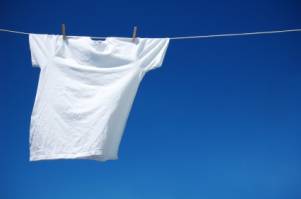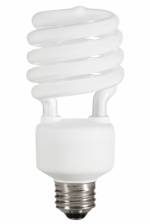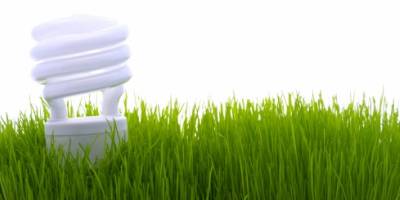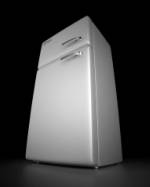|
Home Energy Saving Tips
On this page I’m going to give you some energy saving tips. Using less energy is a double win. You save money and the environment stays clean. Some 20 years ago I heard a broadcast on the radio of a lecture given at the Chautauqua Institute in western New York. The lecturer was speaking about energy policy and making the point that using less energy by making smart decisions would eliminate the need for a large number of power plants. I forget the exact numbers, but the speaker told how much energy we’d save if we replaced just half the incandescent lamps in the country with compact fluorescent lights (CFL). Then he converted the energy savings into the number of power plants we wouldn’t need. I forget the exact number, but it impressed me. I became and early adopter of compact fluorescent lamps (CFL) then. Switching to compact fluorescent lights requires no sacrifice of lifestyle. You still have light when you want it. Plus, you actually save money, both in the cost of the bulbs and the energy to use them. The price of compact fluorescent bulbs has come down a lot. They still cost more to begin with, but since one CFL lasts as long as at least seven standard incandescent bulbs, you save money on bulbs in the long run. Now that I think about it, CFL are a convenience that would be worth paying extra for. Don’t you have light bulbs in your house that are a pain to change? At our home, I really don’t enjoy getting the step ladder out and taking a glass-covered ceiling fixture apart to change the bulb. The less often I need to do that, the better, And I really don’t enjoy getting the extension ladder out to change the flood light bulbs under the eaves of our two story home. CFL last a long time so they don’t need to be changed nearly so often. I’d pay a premium to use them in those spots even they weren’t more energy efficient. The fact that they save both energy and money makes it a no-brainer. I went on so long about compact fluorescent lighting because I think it’s a good example of how a simple decision that requires no sacrifice can have a huge impact on energy usage. Below, I’ve compiled a list of other energy saving tips for you to consider. Remember, The More We Follow These Energy Saving Tips, The Fewer Of These We'll Need:
I try to keep it simple and doable. I also favor suggestions that don't require a major change of lifestyle. Some will these energy saving tips will only save a little energy, some quite a lot. Taken together, though, the total is significant. And it sure beats building another power plant. Home heating is the biggest home energy user so it’s a good place to look for ways to save.Home energy saving tip number one: • Replace an older oil or gas-fired furnace with a new energy efficient one. OK, this doesn’t count as one of the simple energy saving tips, but it can be such a huge energy saver with a short pay-back time that I had to mention it. New furnaces run at efficiencies of 85% or higher. Older furnaces may be less than 50% efficient. • This energy saving tip is simple: change air filters on your forced hot air furnace frequently. This not only saves energy but also improves the air quality in your home. • Use passive solar energy heating principles. I write more extensively on passive solar home heating on another page. • Caulk any leaks around windows and be certain that the weather stripping around exterior doors is air tight. • Electric outlets in exterior walls are a lesser known potential area for air leaks that can be quite costly. Good contractors are careful to seal these in newer homes, but the importance of doing that just wasn’t appreciated years ago. If your home is older, it might be worth taking the face plate off the fixture and sealing around the junction box or using a commercially available foam sheet that fits behind the face plate to seal it. Save Money On Autopilot• Get a programmable thermostat. Yes, you can turn your thermostat up and down manually, but I like the convenience of the automatic approach. Today’s thermostats are inexpensive, easy to install and pretty intuitive to use. Keep it on the low side in the first place and set it to lower the temperature even more just before you go to bed. You can program it to turn on again before you get up in the morning, then turn down when you leave for the day and turn on again before you come home. You’ll be saving money on autopilot. • Turn your hot water heater down. This is both and energy saving tip and a safety tip. Try 110 degrees or even lower. The hot water heater keeps the water hot even when you don’t use it. Keeping it at a higher temperature increases the energy costs exponentially. It really doesn’t make much sense to pay to heat the water all day, and then mix it with cold water to cool it down to a comfortable temperature when you wash your hands. Lower hot water temperature is a safety measure because a child or anyone else is less likely to scald themselves if the temperature of the hot water is on the low end. • Insulate your hot water heater and any hot water pipes that are accessible. This is cheap and easy. • Use low flow shower heads to reduce hot water usage. • This energy saving tip only applies to new construction or a major remodel, but I want to mention it because I think it’s so cool. There’s a heat exchanger drain pipe you can use on your shower’s plumbing. In use, the incoming cold water is first sent through a coil of tubing wrapped tightly around the shower drain before being sent to the shower head. The way most of shower is: we turn on both the hot and cold water, adjust the mix to get a comfortable temperature, then step in and take our shower. The hot water we paid good money to heat runs over our body and then down the drain. That’s money down the drain. The heat exchanger drain recaptures some of that heat into the cold water. As the shower runs, the cold water coming in is going through the heat exchanger drain pipe. This pre-heats the cold water so less hot water needs to be added to it to reach a comfortable temperature. It’s energy saved at no cost in comfort or convenience, the way I like to do it. You just have to plan for it during construction. Energy Saving Tips For The Laundry
• Use an indoor or outdoor clothes line as much as possible. A backyard clothesline was a standard fixture when I was growing up. I’ll admit that putting the clothes on the line and taking them in again is a bit of a chore, but there’s also something particularly fresh about sun-dried clothes. • Doing laundry, only wash full loads and use the coolest water suitable. Cold water detergents work well. • Keep the drier lint filter clean. • Don’t run the drier for any longer than necessary to dry the clothes. Energy Saving Tips For Appliances• Consider the Energy Star ratings when you purchase new appliances. Appliances have two costs. One is the purchase price, the other the cost to run them year in and year out. The rating help you make an informed decision for both your wallet and the environment. • If your dishwasher has an air-dry option, use it. You really don’t need to pay to heat your dishwasher so the dishes dry a little quicker.
• If you buy a home freezer, chose a chest over an upright. Chest freezers use up to 20% less energy because the cold air stays in when you open the lid. • For the same reason, think about what you want before you open the refrigerator door and don’t leave it open while you unpack your groceries or get ingredients out for dinner. When the door’s open, air you paid to cool pours out into the room. Back To Compact Flourescent Lights
• As you might imagine from my opening paragraphs, I’m still a fan of compact florescent lights. They’ve only gotten better since I first started buying them years ago. If your getting one for outdoor use in a cold climate, be sure that the bulb you’re buying has a low temperature ballast. Also, most can’t be used with a dimmer switch. • Coming soon: LED (light emitting diodes) for home lighting. Manufactures have recently developed the ability to use LEDs to produce white light (as opposed to the red glow of earlier LED lights). These lamps are turning up in flashlights now. Expect products for home lighting soon. These bulbs will have an extremely long life and use a fraction of the electricity of even CFL. I hope I’ve shown you that it is possible to save significant amounts of energy and money just by making some easy changes. Reducing energy usage is really the cleanest way to change our energy habits. If you follow some of the energy saving tips you read here, you really will make a difference. LinksClick here to return to Alternative Energy Primer from Home Energy Saving Tips |


 • Refrigerators and freezers are the biggest energy users after heating in most homes. It really pays to check out the Energy Star ratings when buying these.
• Refrigerators and freezers are the biggest energy users after heating in most homes. It really pays to check out the Energy Star ratings when buying these.